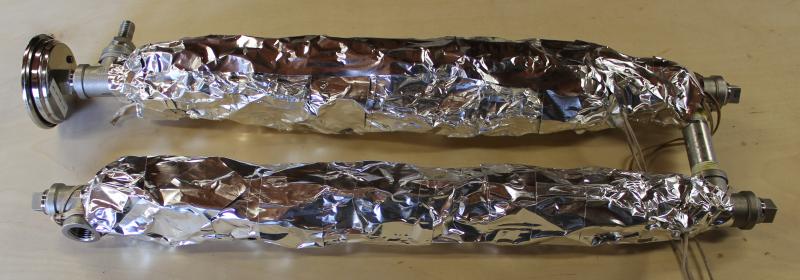rosienej
Well-Known Member
A reader suggested that I document this work in its own thread (part of it appears in another thread). Here it goes.
This thread is to document an approach to a RIMS or eHERMS heating element which can be used with insulated vessels to maintain and adjust temperatures for mashes for 5 to 10 gallon batches.
I have been using two of these elements with 2+ hour mash schedules from dough in to mash out under PID control for 5 and ten gallon batches with reasonable, repeatable results.
NOTES:
Design Goals
Back of the envelope calculation
Parts [McMaster Carr is one source]
If there is interest I will take photos on the new build as the parts come in.
As always, safety first.
This thread is to document an approach to a RIMS or eHERMS heating element which can be used with insulated vessels to maintain and adjust temperatures for mashes for 5 to 10 gallon batches.
I have been using two of these elements with 2+ hour mash schedules from dough in to mash out under PID control for 5 and ten gallon batches with reasonable, repeatable results.
NOTES:
Always use GFI circuits.
Always verify flow through the pipe
Always verify flow through the pipe
Design Goals
1) Use easy to obtain parts (McMaster Carr for example)
2) Safe to use on 110V 20Amp Circuit (16amp budget)
3) Easy to clean, no internal heating elements does not require dis-assembly to clean
4) Modular, can add additional watts as required (subject to the amperage limits)
2) Safe to use on 110V 20Amp Circuit (16amp budget)
3) Easy to clean, no internal heating elements does not require dis-assembly to clean
4) Modular, can add additional watts as required (subject to the amperage limits)
Back of the envelope calculation
The 8ft 624 Watt 120VAC Extreme-Temperature heat tape requires 5.2 Amps. If the system uses two of these heaters + a PID (budget 1 Amp), plus a March pump (budget 1.5Amps) We get approx 13Amps, which is less than 80% of a 20 Amp Circuit.
Parts [McMaster Carr is one source]
1) Extreme-Temperature Heat Cable 13 Watts/Square Inch, 8 ft Length, 624 Watts, 120 V, :: make sure that the tape can be used over metal. See Laboratory Electric Heating Elements Tapes Heating Jackets Heating Blankets Insulated Resistant Wire for precautions.
2) Ultra-High Temp Foil-Faced Insulation Strip 1/2" Thick, 3" X 12', :: make sure that the insulation can withstand direct contact with the heating element. Fiberglass is NOT okay to use.
3) 18” of ½ stainless steel pipe threaded both ends
4) (2) ½ inch stainless steel Female Pipe Tees
5) (2) ½ inch stainless steel Square Head Plugs
2) Ultra-High Temp Foil-Faced Insulation Strip 1/2" Thick, 3" X 12', :: make sure that the insulation can withstand direct contact with the heating element. Fiberglass is NOT okay to use.
3) 18” of ½ stainless steel pipe threaded both ends
4) (2) ½ inch stainless steel Female Pipe Tees
5) (2) ½ inch stainless steel Square Head Plugs
If there is interest I will take photos on the new build as the parts come in.
As always, safety first.















